Kia Niro vs Nissan Leaf – Differences & prices compared
Everyday use, family trips or long-distance drives – here’s where the differences show.
Discover whether Kia Niro or Nissan Leaf fits your lifestyle better.
Costs and Efficiency:
Looking at overall running costs, both models reveal some interesting differences in everyday economy.
Kia Niro has a barely noticeable advantage in terms of price – it starts at 29100 £, while the Nissan Leaf costs 30800 £. That’s a price difference of around 1637 £.
As for range, the Nissan Leaf performs convincingly better – achieving up to 385 km, about 323 km more than the Kia Niro.
Engine and Performance:
Under the bonnet, it becomes clear which model is tuned for sportiness and which one takes the lead when you hit the accelerator.
When it comes to engine power, the Nissan Leaf has a slightly edge – offering 217 HP compared to 180 HP. That’s roughly 37 HP more horsepower.
In acceleration from 0 to 100 km/h, the Nissan Leaf is decisively quicker – completing the sprint in 6.90 s, while the Kia Niro takes 9.90 s. That’s about 3 s faster.
In terms of top speed, the Kia Niro performs a bit better – reaching 185 km/h, while the Nissan Leaf tops out at 157 km/h. The difference is around 28 km/h.
There’s also a difference in torque: Nissan Leaf pulls clearly perceptible stronger with 340 Nm compared to 265 Nm. That’s about 75 Nm difference.
Space and Everyday Use:
Beyond pure performance, interior space and usability matter most in daily life. This is where you see which car is more practical and versatile.
Both vehicles offer seating for 5 people.
In curb weight, Kia Niro is barely noticeable lighter – 1474 kg compared to 1580 kg. The difference is around 106 kg.
In terms of boot space, the Kia Niro offers a bit more room – 451 L compared to 394 L. That’s a difference of about 57 L.
In maximum load capacity, the Kia Niro performs decisively better – up to 1445 L, which is about 655 L more than the Nissan Leaf.
When it comes to payload, Kia Niro a bit takes the win – 466 kg compared to 415 kg. That’s a difference of about 51 kg.
Who wins the race?
The Nissan Leaf proves to be outperforms in nearly all aspects and therefore becomes our DriveDuel Champion!
Nissan Leaf is the better all-rounder in this comparison.
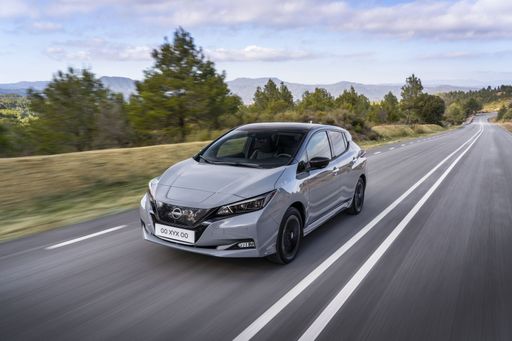
Nissan Leaf
Kia Niro
The Kia Niro presents itself as a versatile and eco-friendly SUV, blending a stylish design with advanced hybrid technology. Its spacious interior offers comfort and practicality, making it ideal for both city driving and longer journeys. With a focus on efficiency and sustainability, the Niro is a compelling choice for environmentally conscious drivers.
details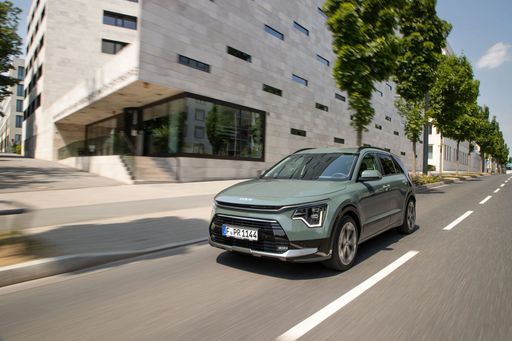 @ press.kia.com
@ press.kia.com
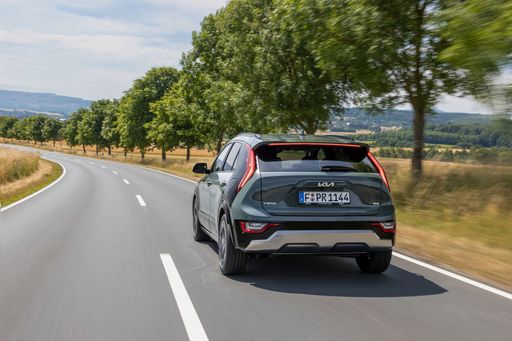 @ press.kia.com
@ press.kia.com
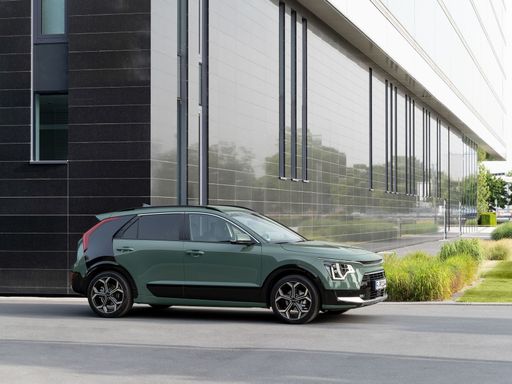 @ press.kia.com
@ press.kia.com
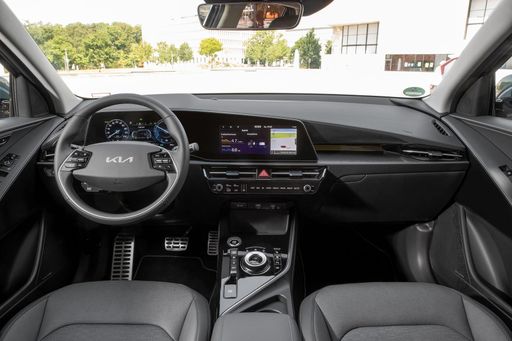 @ press.kia.com
@ press.kia.com
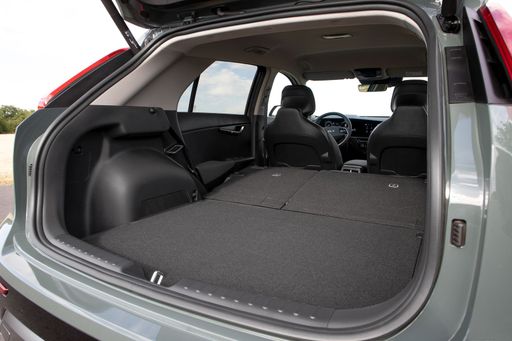 @ press.kia.com
@ press.kia.com
Nissan Leaf
The Nissan Leaf stands out as a pioneering model in the realm of electric vehicles, known for its impressive blend of practicality and eco-friendliness. It offers a smooth and quiet driving experience, making it an ideal choice for city commuting and longer journeys alike. The interior design is both comfortable and intuitive, providing drivers with a sense of modernity and ease of use.
details @ germany.nissannews.com
@ germany.nissannews.com
 @ germany.nissannews.com
@ germany.nissannews.com
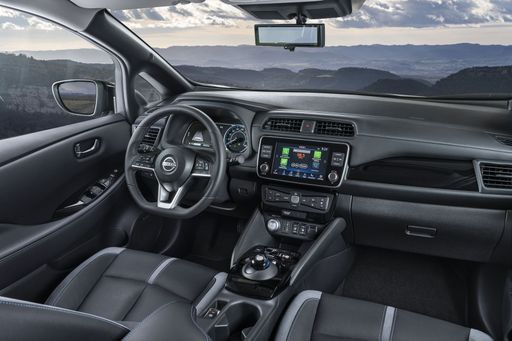 @ germany.nissannews.com
@ germany.nissannews.com
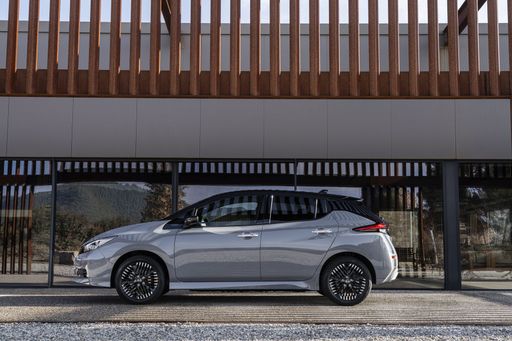 @ germany.nissannews.com
@ germany.nissannews.com

|

|
|
|
|
Costs and Consumption |
|
|---|---|
|
Price
29100 - 38600 £
|
Price
30800 - 37200 £
|
|
Consumption L/100km
2.4 - 4.9 L
|
Consumption L/100km
-
|
|
Consumption kWh/100km
-
|
Consumption kWh/100km
16.7 - 17.8 kWh
|
|
Electric Range
57 - 62 km
|
Electric Range
270 - 385 km
|
|
Battery Capacity
1.3 - 11.1 kWh
|
Battery Capacity
39 - 59 kWh
|
|
co2
53 - 111 g/km
|
co2
0 g/km
|
|
Fuel tank capacity
37 - 42 L
|
Fuel tank capacity
-
|
Dimensions and Body |
|
|---|---|
|
Body Type
SUV
|
Body Type
Hatchback
|
|
Seats
5
|
Seats
5
|
|
Doors
5
|
Doors
5
|
|
Curb weight
1474 - 1594 kg
|
Curb weight
1580 - 1756 kg
|
|
Trunk capacity
348 - 451 L
|
Trunk capacity
385 - 394 L
|
|
Length
4420 mm
|
Length
4490 mm
|
|
Width
1825 mm
|
Width
1788 mm
|
|
Height
1545 mm
|
Height
1540 - 1545 mm
|
|
Max trunk capacity
1342 - 1445 L
|
Max trunk capacity
790 L
|
|
Payload
466 kg
|
Payload
384 - 415 kg
|
Engine and Performance |
|
|---|---|
|
Engine Type
Full Hybrid, Plugin Hybrid
|
Engine Type
Electric
|
|
Transmission
Automatic
|
Transmission
Automatic
|
|
Transmission Detail
Dual-Clutch Automatic
|
Transmission Detail
Reduction Gearbox
|
|
Drive Type
Front-Wheel Drive
|
Drive Type
Front-Wheel Drive
|
|
Power HP
138 - 180 HP
|
Power HP
150 - 217 HP
|
|
Acceleration 0-100km/h
9.9 - 11.4 s
|
Acceleration 0-100km/h
6.9 - 7.9 s
|
|
Max Speed
170 - 185 km/h
|
Max Speed
144 - 157 km/h
|
|
Torque
265 Nm
|
Torque
320 - 340 Nm
|
|
Number of Cylinders
4
|
Number of Cylinders
-
|
|
Power kW
102 - 132 kW
|
Power kW
110 - 160 kW
|
|
Engine capacity
1580 cm3
|
Engine capacity
-
|
General |
|
|---|---|
|
Model Year
2025
|
Model Year
2019
|
|
CO2 Efficiency Class
C, B
|
CO2 Efficiency Class
A
|
|
Brand
Kia
|
Brand
Nissan
|
Is the Kia Niro offered with different drivetrains?
The Kia Niro is available as Front-Wheel Drive.
The prices and data displayed are estimates based on German list prices and may vary by country. This information is not legally binding.
